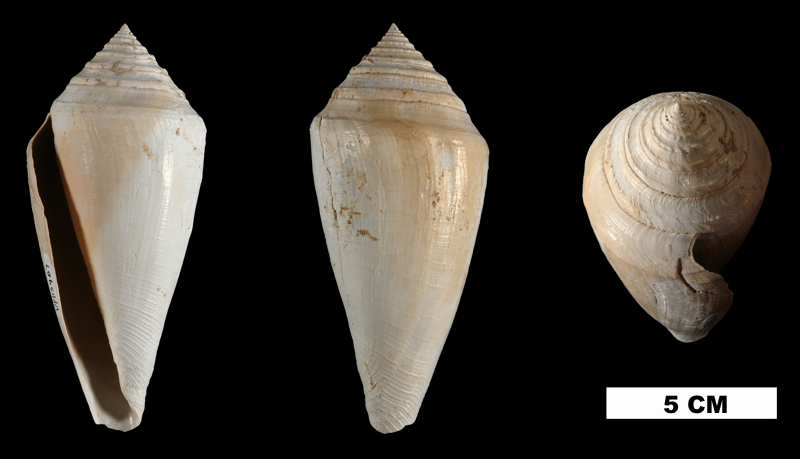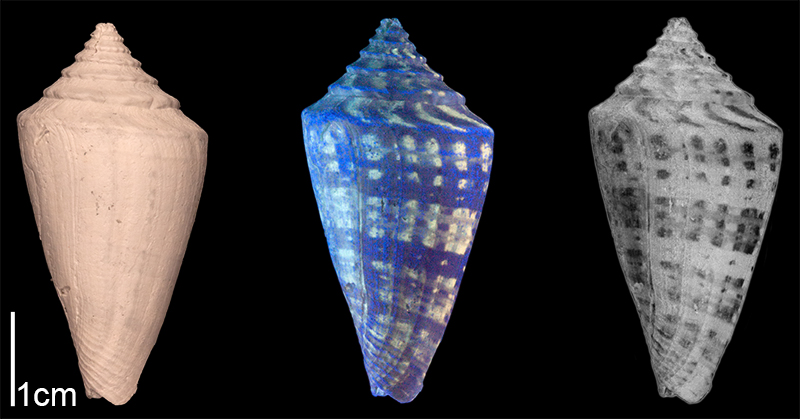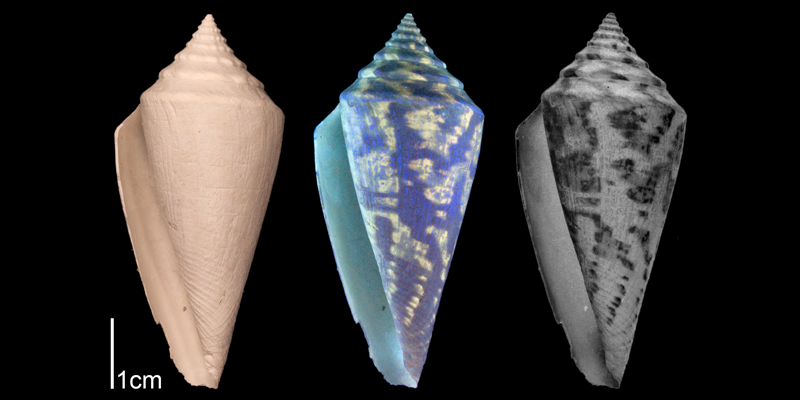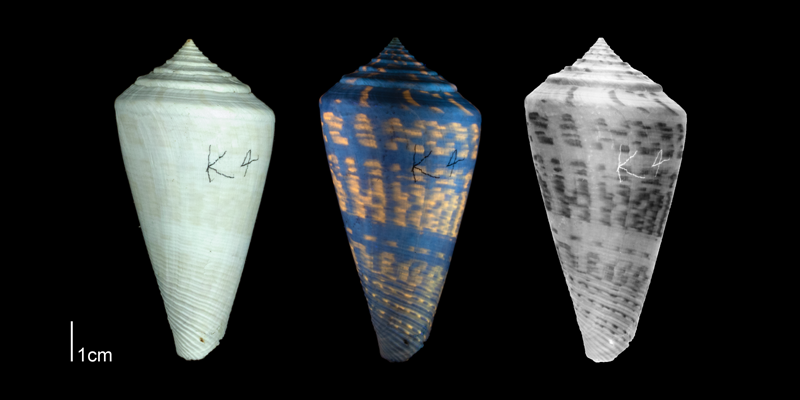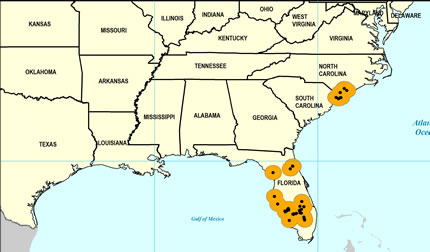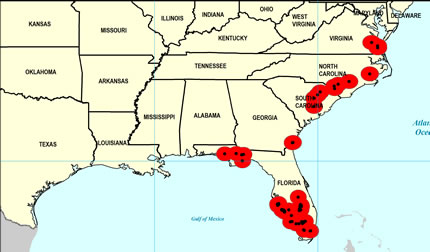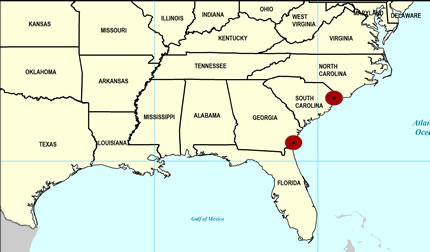
Conus adversarius
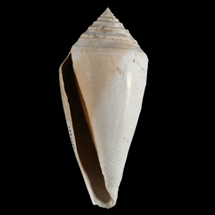
- Phylum: Mollusca
- Class: Gastropoda
- Order: Neogastropoda
- Family: Conidae
- Genus: Conus
- Species: Conus adversarius (Conrad, 1840)
Geological Range
Early Pliocene to Early Pleistocene; Extinct.
Paleogeographic Distribution
South Florida to Virginia.
Remarks
Conus adversarius can be differentiated from all other cone shells (living or extinct) by its sinistral, or left-handed, shell coiling: when held with the apex pointing upwards and the aperture opening facing the viewer, the opening is on the left. All other cone shells have dextral, or right-handed shell coiling.
Original Description (from Conrad, 1840, p. 388):
"Shell sinistral, with obsolete spiral lines, except at base, where they are prominent; angle of body whorl, and base of the whorls of the spire carinated; the carina slightly tuberculated towards the apex; spire prominent. Length 2 1/2 inches."
To access this description in its original formatting through the Biodiversity Heritage Library, click here.
Stratigraphic Occurrences
- Early Pleistocene
- Caloosahatchee Formation (S. FL)
- Nashua Formation (N. FL)
- Waccamaw Formation (SC, NC)
- Late Pliocene
- Duplin Formation (SC, NC)
- Duplin / Raysor formations (GA)
- Intracoastal Formation (N. FL)
- Jackson Bluff Formation (N. FL)
- Raysor Formation (SC)
- Tamiami Formation (Buckingham Limestone) (S. FL)
- Tamiami Formation (Ochopee Limestone) (S. FL)
- Tamiami Formation (Pinecrest Beds) (S. FL)
- Yorktown Formation (NC, VA)
- Early Pliocene
- Goose Creek Limestone (GA, SC)
